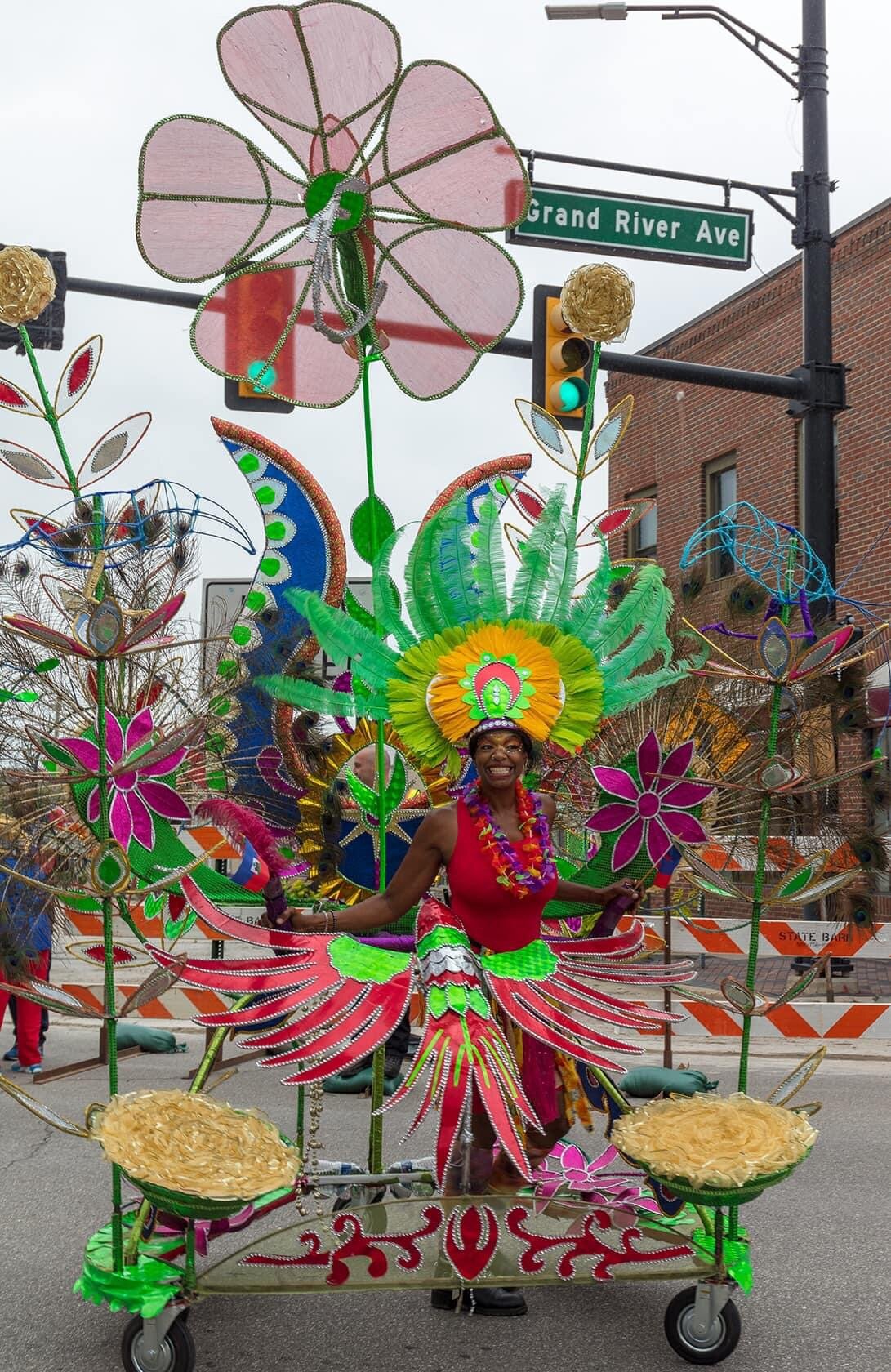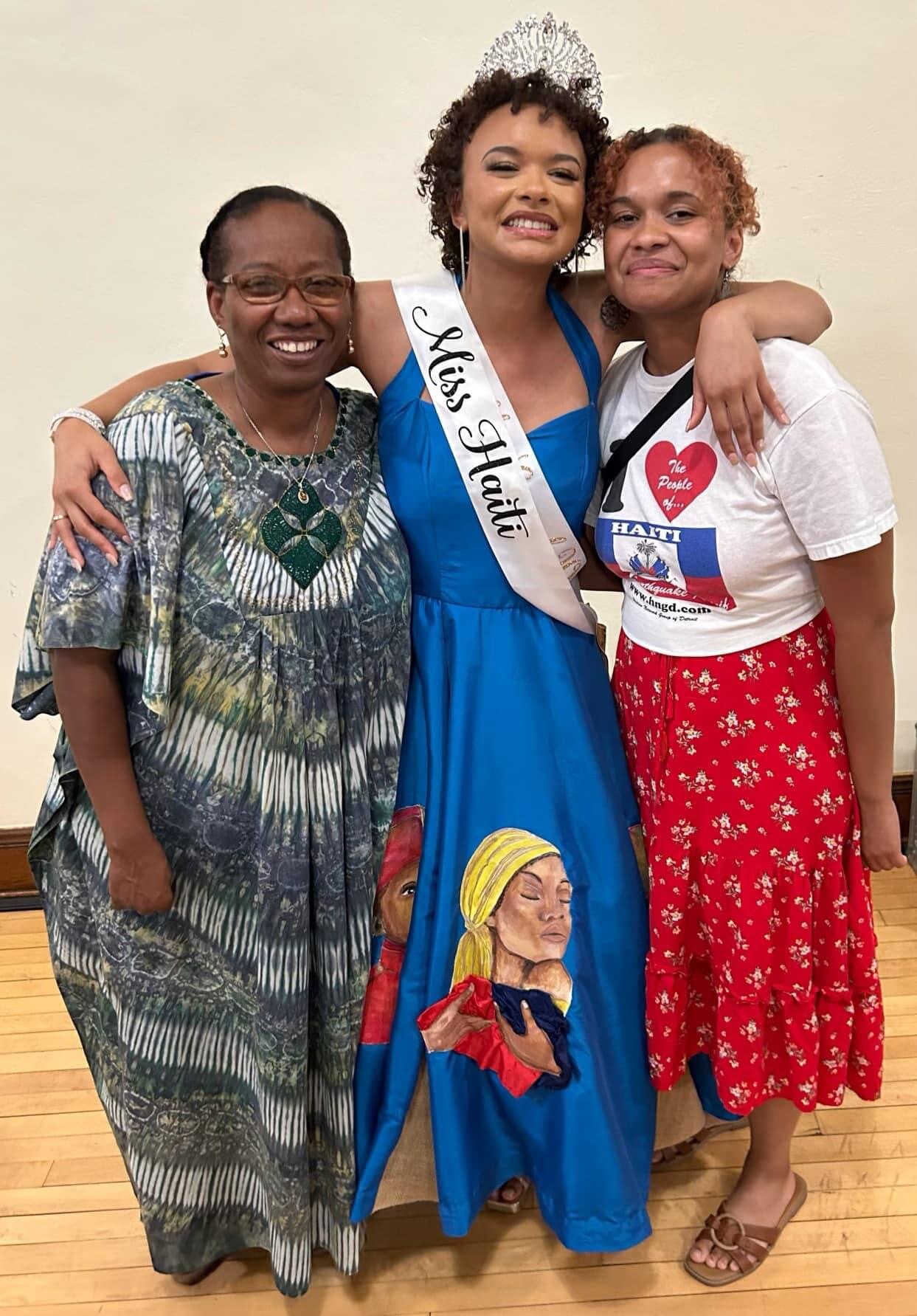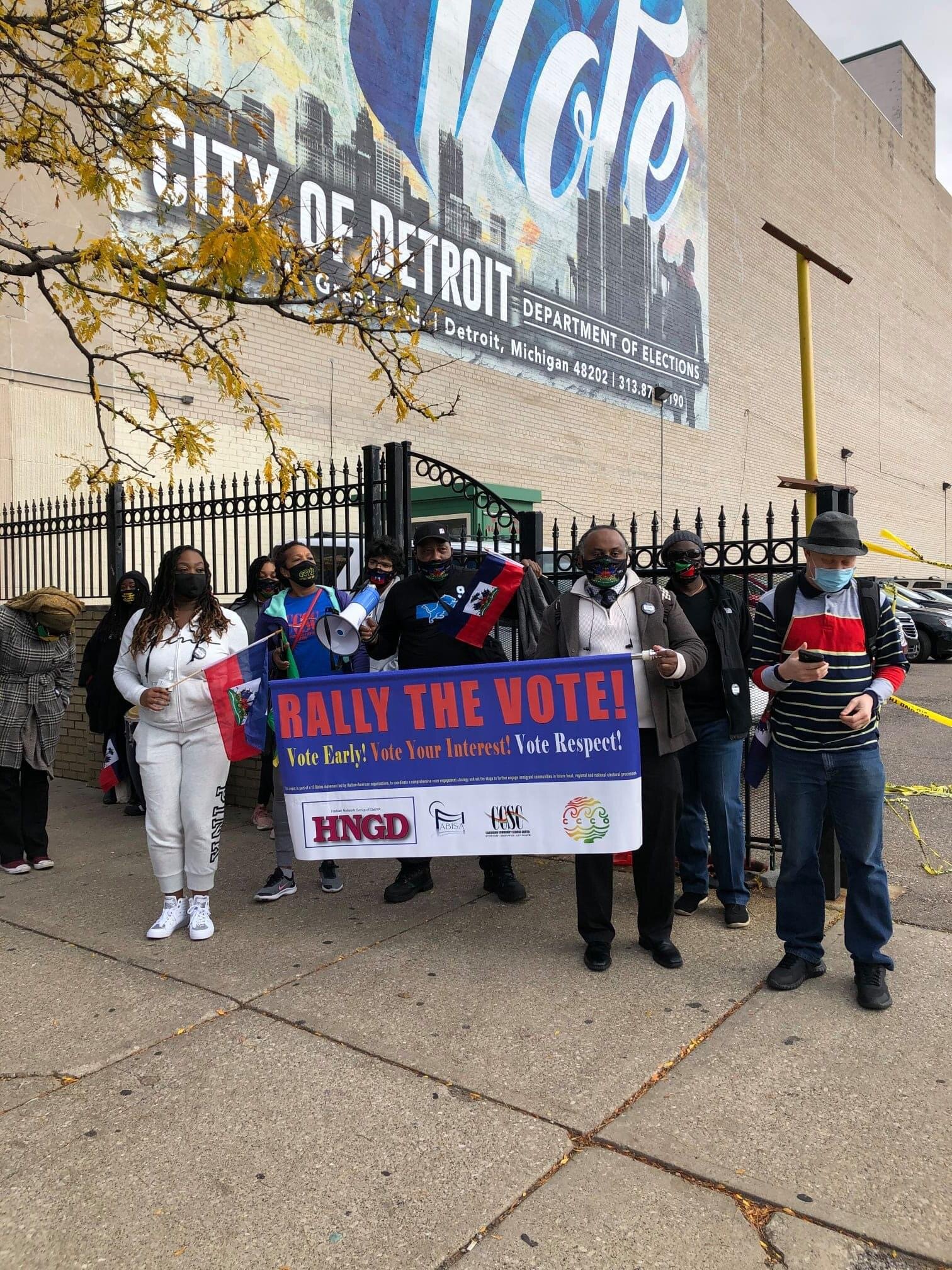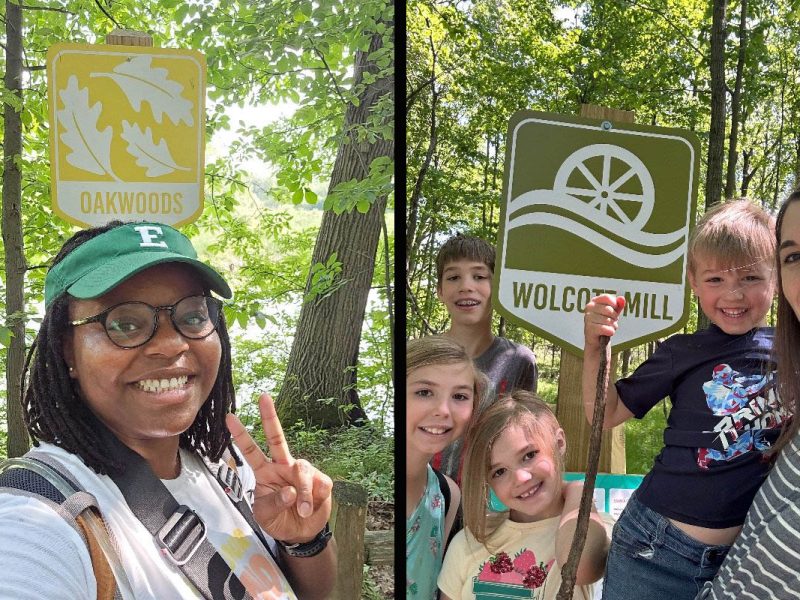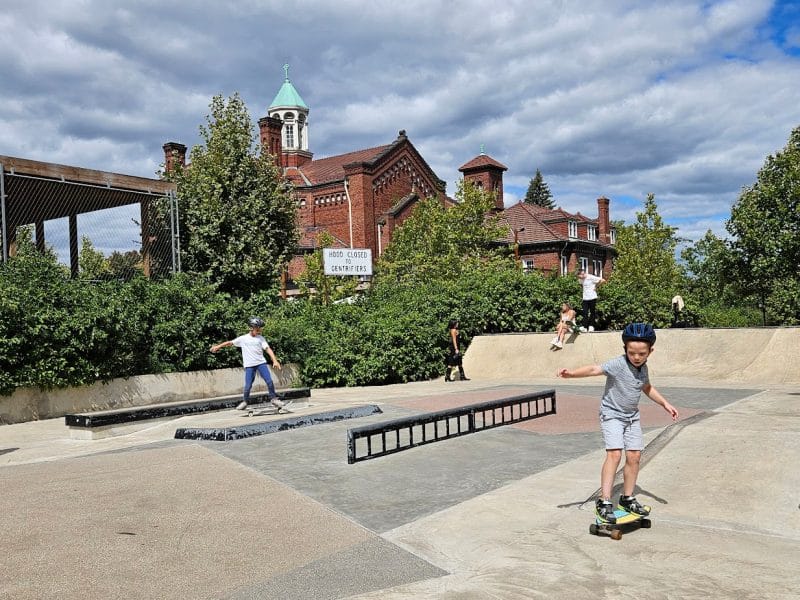As Haitians became more prevalent in Metro Detroit, the two worlds have been intertwining.
Metro Detroit claims the largest Arab-American concentration in the country, a significant Latino population bolstered by Mexican-Americans, and pockets across the metro of South Asians and East Asians, all of whom to some varying degree have attracted attention in recent months as political talking points.
Elsewhere in the U.S., Haitians have also — albeit unexpectedly — taken a share of the nation’s attention, as eyes turned to Springfield, OH after a presidential debate where former President Trump denounced immigrants there. With no major enclave, you might be excused for thinking there is no real history of a Haitian community in the Detroit area, but you would be wrong.
While not as common a destination as Miami or New York, Detroit has a long history with Haitian migration. Despite the wide diaspora, or because of it, Haitians have formed deep roots here.
Recent reports may make Detroiters think Haitian immigrants are new to the region, but they have been here for more than half a century. Some residents think Haitian immigration started in the 1970s; Rilk Noel points to the contrary.
“In the 1950s, a friend of my father came here to become a Franciscan priest,” says Noel, who a member of the Haitian Network Group of Detroit (HNGD), which gives Haitians in the metropolitan Detroit area the opportunity to interact.
Working professionals made up the first waves of Haitian immigrants who came here for education or for work, especially in the engineering and medical industries. That culminated in notable achievements for their descendants today. Regine Conde Beauboeuf, who supervised and management the program that engineered Gordie Howe Bridge for example, is of Haitian descent.
One of those professionals who came to Motown was Gracie Xavier, who currently runs D’Artillery, a nonprofit in Hamtramck that helps immigrants develop the skills they need to succeed. She originally came here as a Detroit Revitalization Fellow in 2015, a two-year program at Wayne State University that worked with Global Detroit.
She stayed with Global Detroit for eight years after the fellowship ended. She managed its Global Talent Retention program then worked in neighborhoods supporting creative engagement with women until 2023.
Xavier was raised in Miami where her family immigrated and lived in multiple cities across America. She has a special love for working-class cities like Detroit and says the vibe here reminds her of the closeness of immigrant communities she knows.
As Haitians became more prevalent in Metro Detroit those two worlds have been intertwining.
“I walked into a Haitian family in Hamtramck,” she says. “I found out they have been here for six years.”
But finding fellow Haitians has not always been easy. When she first arrived in Detroit the wide dispersal of Haitians in Metro Detroit left her seeking connection to her roots.
Eventually she landed on the Haitian Network Group of Detroit (HNGD). There she found her community.
Founded in 1999, the HNGD is a place for Haitian immigrants to meet and discuss events important to their community. It also promotes Haitian culture, builds relations with other groups, and contributes to the welfare of Haitians worldwide.
The HNGD spun off from an annual picnic held for the Haitian community in Bellville by Dr. Phillipe Charles. Charles passed in 2018, but the HNGD continues to view him as one of the most important parts of their coming together.
With all the upheaval in Haiti, an increasing number of Haitian immigrants, asylum seekers, and refugees are coming to the U.S to seek a better life.
Helping the current wave of immigrants coming to Detroit is a top priority for the HNGD. Many don’t have the same skills and education as those who immigrated earlier. There is also often the need to teach English as a second language, which is being addressed.
The organization has taken resources and poured them into helping new arrivals, finding them work or a place to live. Other times it is making connections and finding places that provide the services they need, and most importantly helping navigate a new country.
Xavier’s work at D’Artillery with immigrants is a vital resource. She has taken a few Haitians into her group, but the ability to advise the new immigrants and her connections are her strongest resources.
As a member of the HNGD, Xavier helps newcomers make the same connections she did. It also helped her make new contacts.
For example, she joined a sousou, a type of informal savings club, where members put in an agreed upon amount of money every week or month. A schedule is drawn up with each member, and when it is his or her turn, they get the whole pot.
The club is usually created among trusted friends and is something she hopes will catch on. She says the club helps people get ahead in good times and get by in rough times.
Xavier’s desire to share Haitian culture fits in perfectly with the HNGD’s history.
The most prominent event hosted by the HNGD is the biennial Bèl Bagay Lakay Festival. Promoted as an arts and crafts festival, it is also a celebration of Haitian culture that includes food, folk stories, folk dancing, and more and is a way to preserve the experience for future generations.
There are children and grandchildren of Haitian immigrants living in Detroit. Keeping those traditions alive and understood beyond just stories of the old country is important to the community.
The festival also gives Metro Detroit residents an opportunity to sample and experience the uniqueness of Haitian culture. And with the nation’s tumultuous recent history, HNGD has helped raise money for Haiti when needed, like when the country was devastated by an earthquake.
With such a long history in Detroit, Haitians have also forged bonds with other communities. It’s a two-way street: Those communities work with Haitians when they need help, and vice versa.
Understandably, the closest ties are with other Caribbean cultures, like Jamaica. However, they have also formed long-time ties with Jewish, Hispanic, Arab, Asian and other communities.
To best make use of its resources, this year HNGD held a resource fair for incoming immigrants this September rather than the traditional Bèl Bagay Lakay Festival.
The fair was held at St. David’s Episcopal Church in Southfield, one of the HNGD’s most common allies. The church also provided Noel the space for the press conference where he publicly refuted and condemned the false claims made about Haitian migrants eating pets in Springfield, OH.
“It saddens us to see how we have been mistreated, mischaracterized, dehumanized to an extent,” Noel, who is CEO and president of RilkCo, which provides advisory, engineering, and security solutions to large companies in the energy sector, said at the press conference.
“On a positive note, I have received emails and phone calls from friends who tell me that we know you and we know this is not how Haitians are.”
The resource fair included a hiring event, information on where to find housing, and legal information. The legal information was mostly about what must be done to maintain their status in the country. The HNGD wants to make sure new arrivals do not lose opportunities because they have trouble navigating the system.
“We tell them that this is the land of opportunity,” says Noel. “If they work hard, they will succeed.”
Many immigrants have found work in construction, landscaping, and other fields. However, the largest employer has been Amazon.
The established Haitian community is also playing a role by mentoring the new immigrants, finding employers that are hiring and, in some cases, hiring them for their operations.
With its well-established support system, Samaritas is also helping settle Haitian refugees and helping them navigate their new community. For example, the Hamtramck family Xavier met was settled through Samaritas.
Sofia Ortiz, a program manager for Samaritas, says helping new arrivals make the transition as seamless as possible is paramount.
As part of its program, Samaritas meets with members of the community ahead of time to discuss the situation. It talks to employers about their requirements to make sure immigrants are prepped ahead of time.
It also has quarterly check-ins with the community to mark progress and make sure things are running smoothly.They also access already established immigrants to help with the transition, just like the HNGD does.
The official number of Haitian immigrants who have arrived in Michigan is complicated, because it is combined with Cuban errant (CHE) for classification purposes. This makes it hard to determine how many Haitians came in exactly.
However, so far this year, 318 CHE have come into Michigan, with 245 placed by Samaritas. That number is sure to grow as referrals keep coming.
The current wave of Haitian immigrants has not experienced much friction from locals.
“There has not had a single incident,” says Noel. “They have been accepted.”
While Haitians have embraced their new country that has not erased their love for their native land.
While in earlier years, Haitian immigrants could return to visit family, that is no longer an option. Today many Haitian Americans born here have never had a chance to visit Haiti given the dangerous political climate the country has experienced in recent years.
It’s a reality that weighs heavily on many Haitian Americans.
“My greatest regret is that due primarily to security concerns, I am unable to take my children to Haiti and show them,” Noel says.
Still, most Haitians believe that their homeland will be at peace again, and they will be able to experience both homes.
There is one bit of history HNGD member Regine Conde holds close. She reminds incoming immigrants that during the Revolutionary War Haiti sent troops, the Les Chasseurs Volontaires de Saint Domingue, to fight alongside the Americans during the Siege of Savannah in 1779.
“We need to keep in mind that we have been intertwined with this country since the very beginning.”
